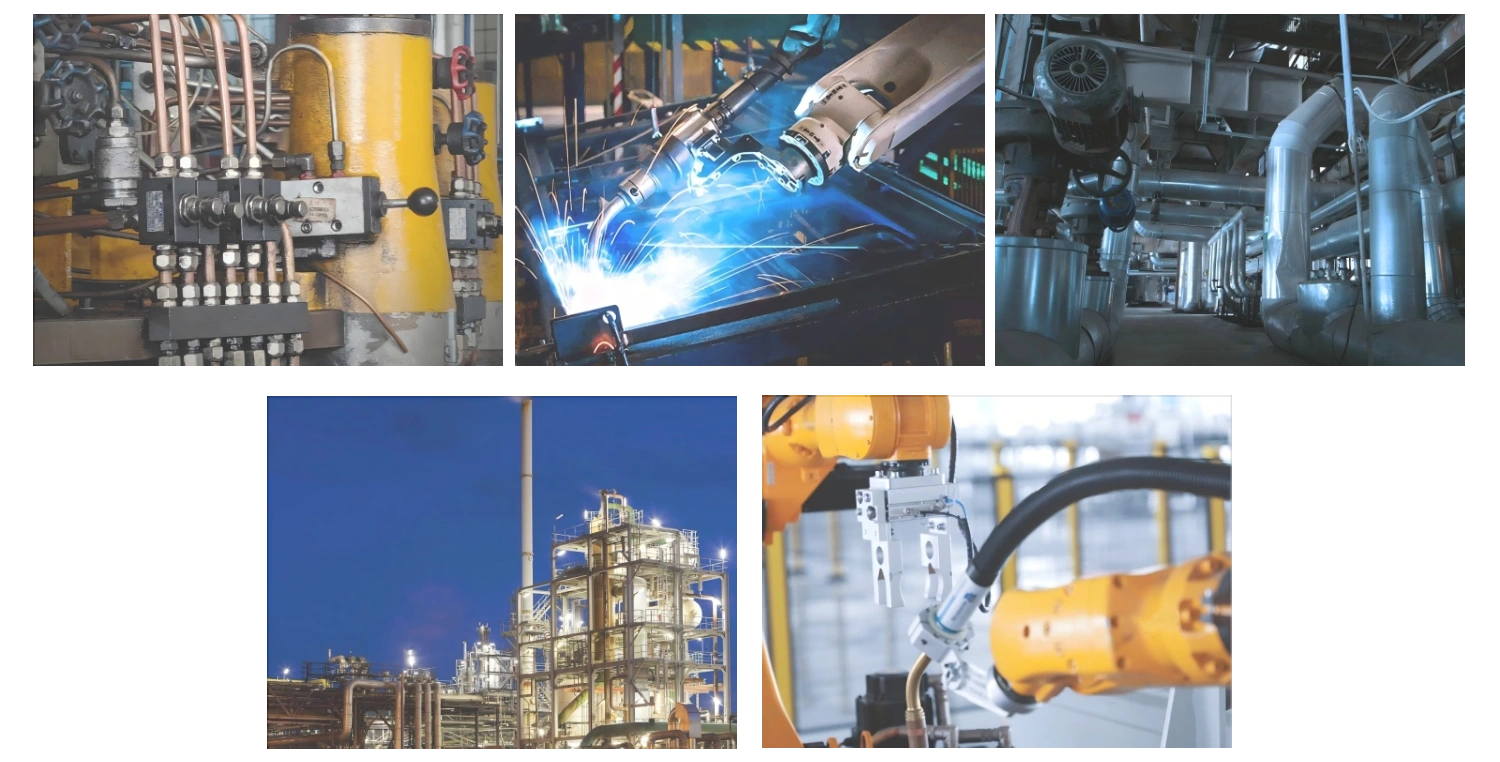Critical Role of Precision Rubber Components in Mining Operations
Withstanding Harsh Mining Environments
The mining environment is known for regularly encountering such tough conditions as sharp temperature swings, high pressures and exposure to corrosive chemicals. Under such extreme conditions, only the most durable of materials can be employed, and precision rubber components become invaluable. They are designed to remain elastic and yet strong under these kind of extremes to perform well. Not only is the resilience of these components effective â it is necessary. There are statistics that shows many non-industrial grade rubber products are failing at mine sites and causing expensive downtime and repairs. These failures serve as a reminder of the need to utilize industrial-application-specific, engineered rubber products. This need is further demonstrated by the long-term savings in cost between continuous serviceoperation and frequency downtime for equipment maintenance.
Common Applications: Seals, Gaskets & Vibration Dampeners
Aspects like seals and gaskets for example are very popular in mining because they help prevent leaks and keep things running at maximum efficiency. These are engineered to take the challenges of mining environments where air tight seals are required to keep dust and water away from critical equipment. Vibration Dampeners for every application Vibration dampeners are important for protecting equipment from the harmful effects of continuous vibration, when not properly addressed, can drastically reduce the life of equipment. Precision rubber parts are widely used in a number of mining applications, proving the effectiveness of rubber in minimising downtime and increasing productivity. Some, such as high-performance seals and gaskets, are used to help keep hydraulic pressure at the required level so that all equipment operates smoothly and continuouslyâyet another sign that precision-engineered rubber products have essential roles to play in mining.
Material Selection for Mining-Grade Rubber Components
EPDM: Weather & Chemical Resistance Solutions
As with any mining grade rubber goods, EPDM (Ethylene Propylene Diene Monomer) is a popular choice of rubber spotted within our product line. Interestingly, it is also highly resistant to temperature extremes, ultraviolet light, and chemicalsâa trifecta of challenges mine work is likely to offer. Unquestionably the most popular allround rubber in our range, EPDM is a highly efficient rubber with the ability to do everything that applied to!Despite this EPDM isn’t weakened or damaged like some other forms of rubber and is therefore favourable when weather and chemical resistance are a factor. Significantly, various studies have shown that EPDM performs very well in terms of longevity and durability when exposed to typical mining environments including other materials, like natural rubber, and nitrile, which can’t always withstand the same type of environmental stresses.
Nitrile Rubber for Oil/Fuel Resistance
High oil/fuel environments: the mining industry The industry where nitrile rubber finds its most common applications is the — the mining industry This is due to the fact that it excels in high oil and fuel environments. Compared to many other rubbers, Halobutyl HSUB has superior oil resistance and in the Mining Sector, oil and fuel resistance is an Industry Standard requirement for handling oil and fuel in the provision of products. The durability of nitrile rubber is much itâs case history that exhibit nitrile rubberâs performance in vital applications where is no other expect ion then harsh oil and fuel environment. In mining, where machines can be deployed heavily, involve oil and fuel exposure, the robustness of nitrile rubber insulates this gravity use of mining machines, and the resultant life of mining machines becomes longer compared with those without such an oil and fuel resistance.
Specialty Compounds: Viton & High-Temperature Silicones
Specialized compounds like Viton and high temperature silicones are important for mines with extreme temperatures and harsh chemical environments. Viton, known for its superior resistance to high temperatures and chemicals, ensures the rubber won't degrade in the presence of harsh chemicals and heat. High-temperature silicones, however, provide excellent thermal stability, and many are well suited for mining environments in which equipment is subjected to constant and severe maintenance cycles. There are plenty of instances where these compounds have been successfully incorporated in high demand mining application, offering long term dependability while minimizing downtime â which results in lower operating cost and overall better equipment performance.
Precision Manufacturing Techniques for Mining Components
CNC Machining for Rubber P Clips & Complex Geometries
CNC Machining is fueling the process for precision components such as rubber P clips and convoluted geometries. This high-tech opens the door to ultra-precision, so manufacturers can make tiny parts that were once difficult or impossible to achieve. When combined with CNC methods, we are able to improve the accuracy of cutting rubber P clips, and set them to size so that they are well suited to a tough environment. Savings, both in terms of efficiency and waste, are also often reported by manufactures--especially with custom or small-batch productions--since CNC machining streamlines the design-to-production process, leaving less room for error.
Laser Cutting for Rubber Gasket Precision
There are obvious advantages to laser cutting processes in the production of accurate rubber gaskets, far above and beyond what was previously possible. Because of the accuracy of laser cutting, clean edges and exact sizes are guaranteed, which is critical for parts that will be used for high pressure applications. When compared with traditional gasket cutting methods, laser cutting is faster, cost-effective, and provides better precision, which is why laser cutting is the number one choice for bulk production of rubber gaskets. The difference is typically demonstrated by comparing high-quality laser cuts to those produced by more traditional means, but the graphic also serves to accentuate the large benefits of the technology.
Injection Molding for High-Volume Production
Injection Molding - Is an effective way to mass produce rubber parts that allows for consistency and speed that other methods can't compete with. It is a method that is effective in mass production because of its ability to produce quickly and produce less waste product. In addition, injection molding assures that each piece is of the same quality and helps in accomplishing a quicker production turnaround for large orders. The industry evidence indicates the substantial money savings and environmental benefits resulting from waste reduction and energy efficient production processes, and so this is a popular option for manufacture for large orders.
Enhancing Durability in Mining Rubber Components
Abrasion Resistance for Conveyor Systems
For rubber products in conveyor system, its resistance to abrasion is extremely important, particularly in mining industry that is more demanding. These systems are generally used to convey coarse materials and,so rubber parts are heavily abraded. When we choose superior rubber compounds and anti-stick treatments, our gas tank rubber products last longer. They feature common materials such as polyurethane and nonspecialty neoprene coatings that offer good abrasion resistance. In the mining industry, researchers used statistics to establish a fact: that premium-grade rubbers generally last much longer than standard rubber materials, implying that investing in premium products means longer life for the equipment.
Chemical-Resistant Formulations for Ore Processing
The challenge of chemical exposure requires the use of advanced rubber compounds. These compositions are made to resist harsh chemicals (acids and bases) found in the mining industry. Certain formulations include additives such as fluorocarbon elastomers, which are highly resistant to chemicals and can be used to help ensure the longevity of rubber parts. Case study evidence shows that parts produced from these state-of-the-art formulations work much better in actual processing, saving you downtime and maintenance dollars.
UV/Ozone Protection for Surface Mining Equipment
UV and ozone exposure can compromise rubber parts on surface mining equipment, resulting in decreased performance and a shorter shelf-life. The protection of these two components is critical to minimize maintenance costs and station down time. Protective additives and treatments, such as antioxidant and antiozonant chemicals, are commonly added to the rubber to improve its resistance to UV and ozone exposure. These treatments have been statistically shown to be successful and that make a difference in how well and how long seals perform. Parts coated with UV/ozone-resistant materials show substantially less cracking and wear relative to untreated parts and remain working well in dirty, rugged environments.
Compliance with Mining Industry Standards
ASTM D2000/SAE J200 Certification Requirements
The ASTM SAE J200 and D2000 certification is highly essential for rubber mining products quality. These standards provide a framework for categorizing rubber materials according to their physical and chemical properties as well as the environments in which they are used, and assure these materials meet the industry specific testing and requirements for durability and performance. Compliance is associated with strict testing and documentation of nebulizer materials making it clear which materials are compatible for use with specific applications. Do for instance, which guarantees the ability of the parts to endure harsh mining conditions, improving meantime between failure. On the other hand, non-compliance can cause significant operational loss and high maintenance. By achieving these benchmarks, businesses not only maintain machine-to-machine efficiency but also build more trust in the reliability of their products.
MIL-SPEC Compliance for Defense Mining Contracts
MIL-SPEC requirements are a stringent standard required on defense contracts for use in mining applications especially when it comes to pumps. These standards assure product durability and performance criteria especially required by military use. But even meeting MIL-SPEC can be tough given the complexity of documentation and testing involved. Manufacturers may be challenged to modify production processes to accommodate the strict standards and the corresponding high costs of compliance. However, meeting MIL-SPEC criteria is a must for corporations that wish to participate in defense-oriented mining projects. Not only does compliance increase a company's opportunities to secure high-valued contracts, but it also paints the business as quality focused, reliable as well, which is of course something demanded from defense projects.
Quality Control Through PPAP Protocols
In mining we rely on the Production Part Approval Process (PPAP) to champion product quality and reliability. The PPAP process is when guidelines lay down by manufacturers need to be met so that production parts can be approved and validated before production is undertaken en masse. These guidelines embrace extensive documentation and thorough validation criteria, including but not limited to design documents, process flow charts, and control plans. By using PPAP, businesses can guarantee that their products will meet predefined quality requirements and thereby mitigate risk (e.g., production and long-term costs). Many of the top manufacturers have used PPAP protocols throughout their mining equipment and achieved increased reliability and performance and have restored faith in their reliability in the market for their brand.







